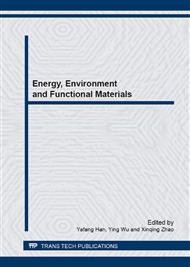p.412
p.419
p.425
p.431
p.436
p.442
p.448
p.454
p.460
Stable Levitation Performance of Bulk High Temperature Superconductor Magnet in Applied Magnetic Fields
Abstract:
Bulk high temperature superconductor magnet (HTSCM) has been considered to get the better stable levitation in applied magnetic field which is not the original field-cooling magnetization (FCM) field in this paper. The vibration disturbance experiments firstly showed that a permanent magnet (PM) can suspend stably under a bulk Yttrium Barium Copper Oxide (YBCO) HTSCM. This implies that the stable levitation of one single bulk HTSCM is able to realize in the other magnetic field even from one single small PM due to the re-magnetization effect. Secondly, it is found that the HTSCM with more trapped flux produced larger guidance forces and smaller repulsion levitation forces compared with the well-recognized FCM condition of the30mm field-cooling height by the permanent magnet guideway (PMG). Especially, the HTSCM with the 0.349T trapped field achieved a maximum 9.8N guidance force, which is over impressive 7 times than the conventional FCM condition. So, it is feasible to introduce the bulk HTSCM into the HTS Maglev transportation system because this pre-magnetization method of the onboard superconductor bulks is not only helpful to improve the levitation capability and stability, but also enhance the dynamic property above the practical PMG.
Info:
Periodical:
Pages:
436-441
Citation:
Online since:
April 2014
Authors:
Price:
Сopyright:
© 2014 Trans Tech Publications Ltd. All Rights Reserved
Share:
Citation:



